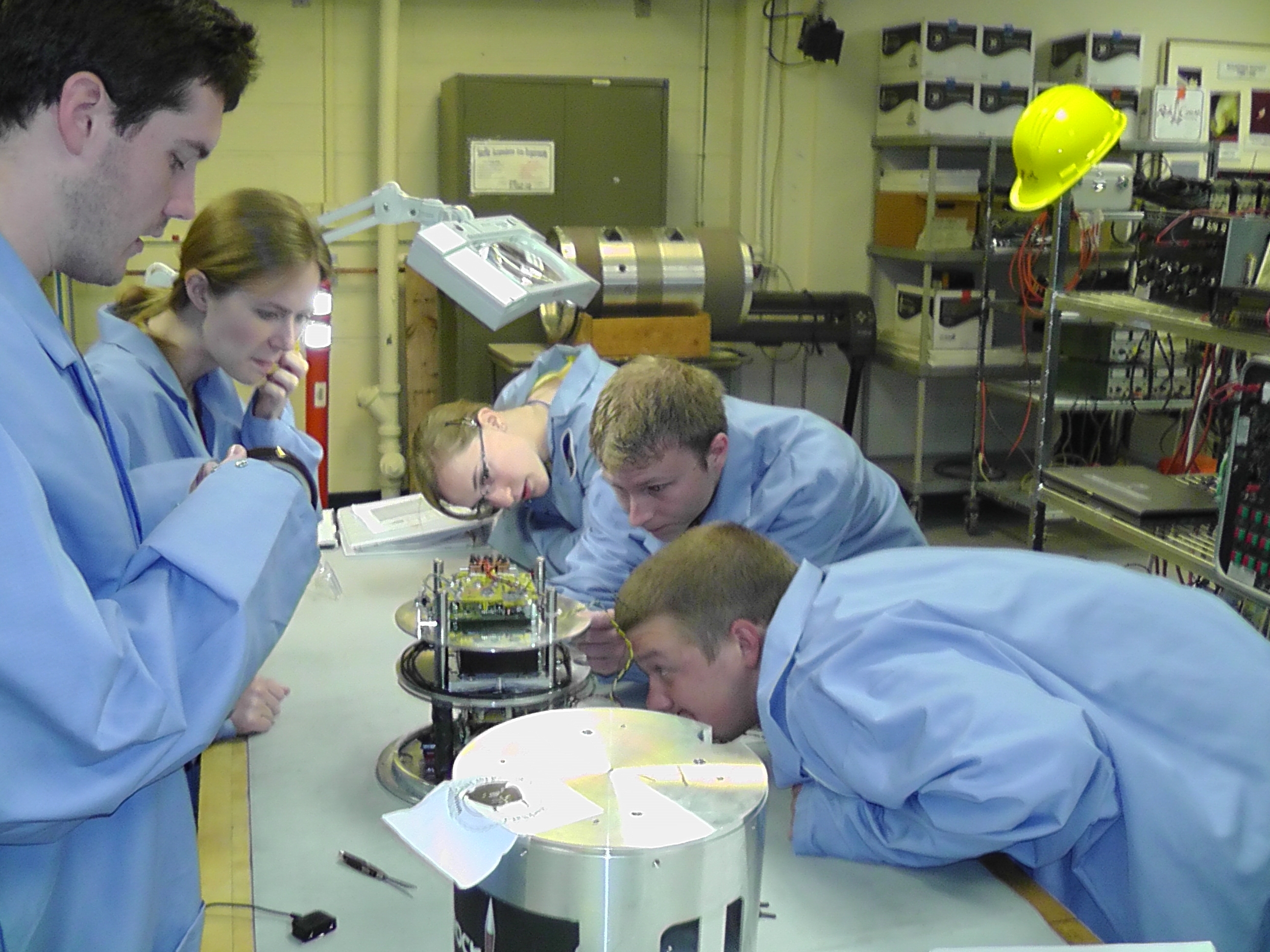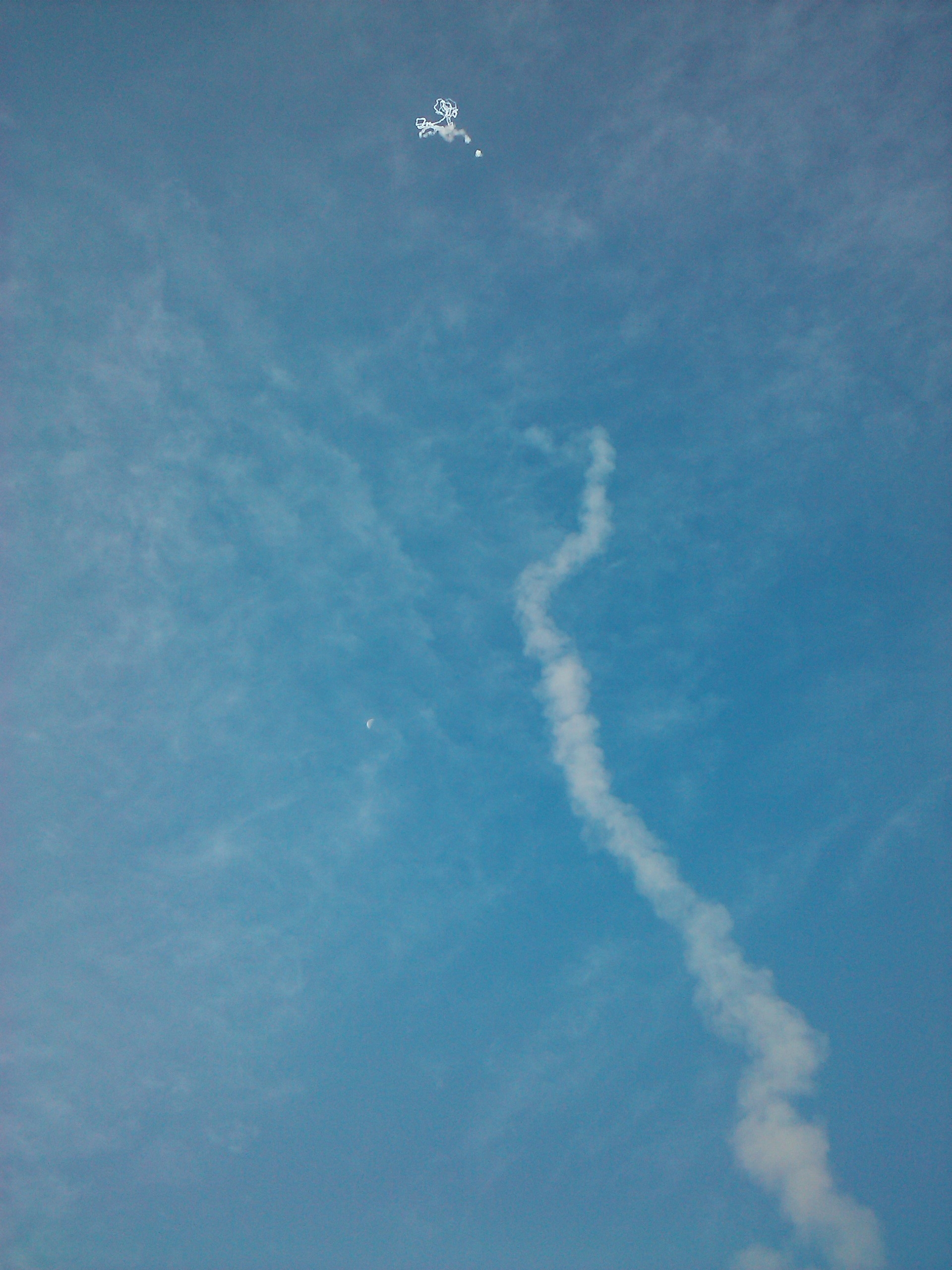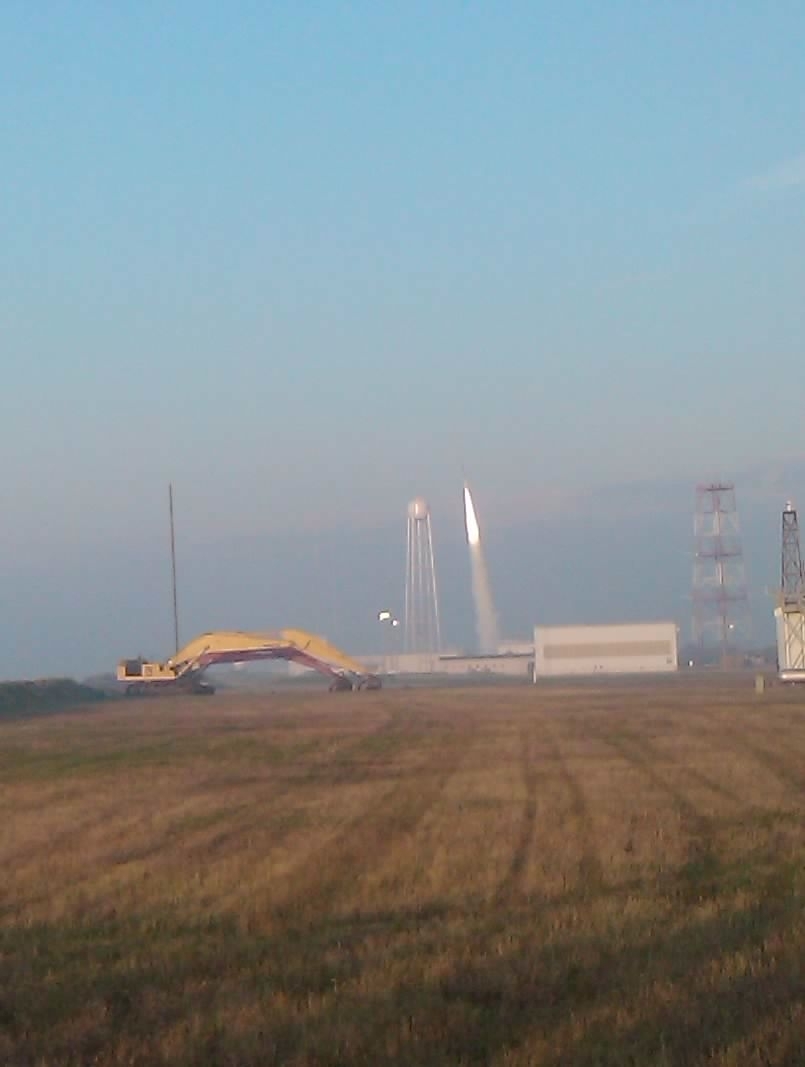Engineering students launch experiments on NASA rocket
Watching from Wallops Island Flight Facility last month as a year's worth of his scientific work lifted off into a clear Virginia sky, Donovan Bolger could only stand back and marvel.
“I was in awe at first — just the sheer speed of the rocket taking off,” said the recent Temple electrical and computer engineering graduate. “Then I realized that something I worked on all year long was on it. I had almost forgotten that that was what we had come here for.”
Bolger was among nine Temple engineering students who spent the past year designing and building two experiments that were launched June 23 aboard the two-stage solid booster rocket Terrier Orion II. The projects were part of RockSat, a NASA and Colorado Space Grant Consortium program that prepares students to design payloads for space flight.
Led by faculty advisor Electrical and Computer Engineering Professor John Helferty, Bolger and three fellow electrical engineering students — John Zelby, Xuhui Liu and Greg Wells — had designed and constructed an active vibration suppression system for testing on the rocket as their senior design project. The students will compare their data to that of a Temple team that developed a passive vibration dampening system launched on a flight last year.
“NASA has a specific methodology for all design processes,” said Helferty, who once worked at NASA’s Jet Propulsion Laboratory. “They want us, engineering institutions, to begin using that methodology in senior design projects so that students get an idea of what that methodology is, so when NASA hires them, they’re familiar with it.”
Eight universities had payloads on the rocket, which soared to an altitude of 73 miles and traveled approximately 50 miles before splashing down in the Atlantic Ocean. Each payload was limited to less than 4.75-inches high and no more than 6.5 pounds and was subject to current and voltage restrictions. The rocket was recovered and the payloads brought back to Wallops Island where each team could retrieve its data.
A second team of Temple electrical and computer engineering students that included juniors Yuri Apel, Allison Tierney, Bill Bagdon, Gaurang Fuletra and Jaykrishna Shukla designed an experiment to measure the magnitude and direction of earth’s magnetic field throughout the flight of the rocket.
Apel said that going through the NASA design process, with its many requirements and specifications, is helping to prepare him for challenges he will face in industry, where companies require work within established specifications.
Likewise, Bolger said he learned a lot from participating in RockSat that he would might not have gained in the classroom. Most important, he said, has been the opportunity to work as a team with three classmates on a live project.
While Bolger and Apel said they weren’t nervous before the launch, both admitted that they were anxious about whether their experiments would function properly. But their fear quickly subsided as the countdown ended with the successful lift-off.
“It was pretty exciting,” said Apel. “I don’t mind waking up at four in the morning for this.”



